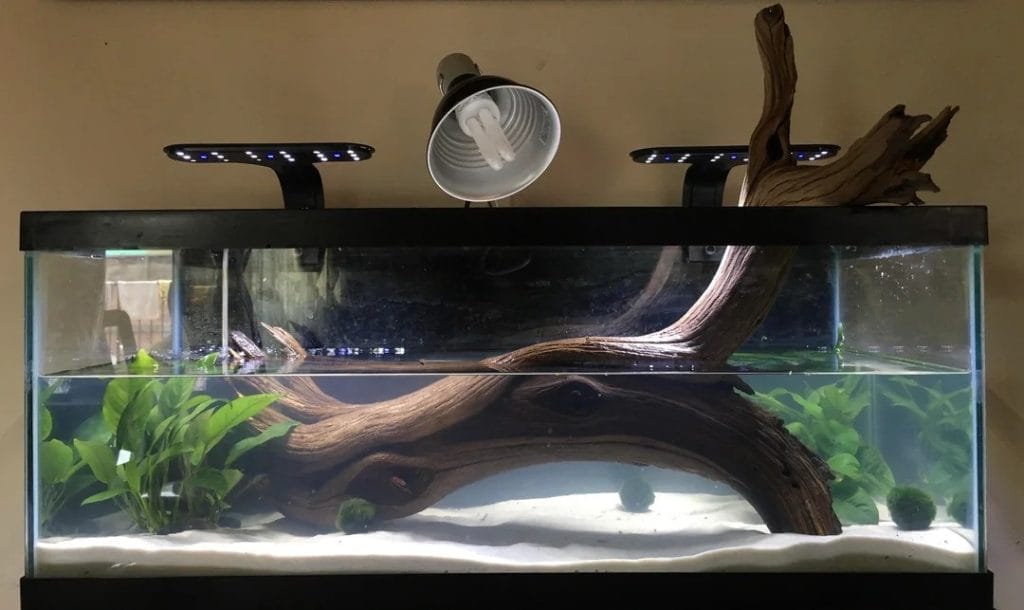Make Your First Sea Turtle Plushie With This Easy Sewing Pattern

This post was created with help from AI tools and carefully reviewed by a human (Muntaseer Rahman). For more on how we use AI on this site, check out our Editorial Policy.
If you’ve been looking for an easy sewing project that’s actually fun to make and looks adorable when finished—this sea turtle plush is it.
You don’t need fancy tools or years of sewing experience. Just a simple pattern (which I’m giving you for free), some basic materials, and a bit of patience. By the time you’re done, you’ll have a soft, squishy turtle that you stitched together with your own hands. Pretty satisfying, right?
Let’s get started.
What You’ll Need
Nothing fancy here. Just the basics you probably already have lying around or can grab cheap.
- Fabric – Felt, fleece, or cotton works. Pick something soft but not stretchy.
- Needle and thread – Or a sewing machine if you’re feeling confident.
- Scissors – Sharp ones, not the ones you use to open snack bags.
- Pins or clips – To hold pieces together while sewing.
- Stuffing – Polyfill, fabric scraps, or whatever makes your turtle nice and squishy.
- Fabric marker or chalk – So you don’t go rogue cutting blind.
- Optional: safety eyes or buttons – Or just stitch the eyes with black thread.
That’s it. Keep it simple and fun. Ready to cut stuff up? Let’s go.
Download the Sea Turtle Pattern

Here’s the free pattern I promised—no strings attached. Just click the link, print it out, and you’re good to go.
👉 Click here to download the Sea Turtle Sewing Pattern (PDF)
Make sure to print it at 100% scale on A4 paper so everything lines up right. No shrinking, no weird sizes.
If your printer throws a fit, just threaten it with a real turtle. Works for me.

This Hilarious Turtle Book Might Know Your Pet Better Than You Do
Let’s be real—most turtle care guides feel like reading a textbook written by a sleep-deprived zookeeper.
This one’s not that.
Told from the snarky point of view of a grumpy, judgmental turtle, 21 Turtle Truths You’ll Never Read in a Care Guide is packed with sarcasm, sass, and surprisingly useful insights.
And hey—you don’t have to commit to the whole thing just yet.
Grab 2 free truths from the ebook and get a taste of what your turtle really thinks about your setup, your food choices, and that weird plastic palm tree.
It’s funny, it’s honest, and if you’ve ever owned a turtle who glares at you like you’re the problem—you’ll feel seen.
Step-by-Step Sewing Guide
Let’s make this turtle come to life—slow and steady, just like your new little buddy.

1. Print and Cut the Pattern
Open the PDF file and print it on A4 paper at 100% scale (don’t let your printer “fit to page”—that messes things up).
Once it’s printed, cut out all the pattern pieces using regular scissors. These paper cutouts are what you’ll trace onto your fabric.

2. Trace the Pieces on Fabric
Lay your fabric flat on a table. Place each paper pattern piece on the fabric and trace around it using fabric chalk or a fabric marker.
Here’s what you need to trace:
- 1 Shell Top
- 1 Shell Bottom
- 1 Head
- 2 Flippers (you can flip the pattern for the second one so they’re symmetrical)
If your fabric has a “right” and “wrong” side, trace on the wrong side (the less pretty one). That way, the markings won’t show on your final plushie.
If sewing this sea turtle felt even a little satisfying, wait until you’ve got over 100 more patterns to pick from. Plushies, dolls, kidswear—you name it.
One little bundle, one low price, and you’re set for a lifetime of “what should I make next?” never being a problem again.
Peek inside the bundle and you’ll probably spot your next 5 projects. Maybe even 10.

3. Cut the Fabric Pieces
Now grab your sharp fabric scissors and cut out the pieces you just traced. Take your time. Try to cut just outside the lines if you added seam allowance, or on the line if the pattern already includes it.
If things look a little wobbly—don’t stress. Turtles aren’t built for symmetry either.

4. Sew the Flippers and Head
Take the two flipper pieces and fold each one in half with the right sides touching (pretty sides together).
Sew around the curved edge of each one, leaving the straight edge open. Do the same for the head.
You can do this by hand using a simple running stitch, or use a sewing machine if you’re comfortable with one.
Once they’re sewn, turn each piece right side out by gently pushing from the inside with your fingers or the back of a pencil.

5. Attach the Flippers and Head to the Shell Bottom
Lay the Shell Bottom piece face up (the side that will show on your finished turtle).
Now place the flippers and head on top of it, facing inward. It’ll look weird—they should be pointing toward the center, not sticking out.
Pin them in place so they don’t shift. When we sew the turtle shut later, these will flip out to the right position like magic.

6. Sew Shell Top and Bottom Together
Put the Shell Top piece on top, with its right side facing down—like a fabric sandwich.
Now pin everything together all around the edge. Make sure the flippers and head are tucked safely inside.
Sew all the way around the shell, but leave a 2-inch gap unsewn. This is how we’ll turn the turtle right side out and add stuffing.
Again—hand sewing or machine sewing both work. Just take your time and follow the shape.

7. Turn It Right Side Out & Stuff It
Through the little gap you left, gently turn the whole thing right side out. Use your fingers to push out the corners and curves so the turtle takes shape.
Now stuff it with polyfill, cotton, or fabric scraps. Add small bits at a time and use a pencil or chopstick to push it into the flippers and head.
You want it firm but not bursting. Think “cuddly,” not “overstuffed pillow.”

8. Stitch the Opening Closed
Once it’s stuffed, it’s time to seal the deal.
Use a ladder stitch (also called invisible stitch) to sew the opening closed by hand.
It sounds fancy, but it’s basically sewing inside the fold so the thread hides. If that’s too tricky, do a neat whip stitch—your turtle won’t complain.

9. Add the Finishing Touches
Give your turtle some personality! You can:
- Add safety eyes or tiny black buttons
- Use black thread to sew simple eyes and a smile
- Embroider little shell lines if you’re feeling artsy
That’s it. You’ve officially made your first plush turtle!
Beginner Tips
- Take your time. There’s no race here. If your stitches aren’t perfect, your turtle won’t hold a grudge.
- Use felt if you’re nervous. Felt doesn’t fray, holds its shape, and is easy to sew. Great choice if you’re just starting out.
- Don’t skip the pins. Pinning your pieces together before sewing keeps stuff from sliding around. It saves you from some wonky turtle drama later.
- Clip the curves. After sewing the shell, make tiny cuts along the curve (don’t cut the stitches). This helps it turn out smooth when you flip it right side out.
- Stuff slowly. Don’t just cram everything in. Add small chunks of stuffing and spread it around so your turtle isn’t lumpy in weird spots.
- Keep the seam allowance in mind. If the pattern says leave a ¼ inch around the edge, try to stick to that while sewing. Too close, and you risk breaking the seam later.
- Don’t worry about “perfect.” Wonky turtles are still cute. Handmade means it has character—and that’s the whole point.

About Author
Muntaseer Rahman started keeping pet turtles back in 2013. He also owns the largest Turtle & Tortoise Facebook community in Bangladesh. These days he is mostly active on Facebook.












